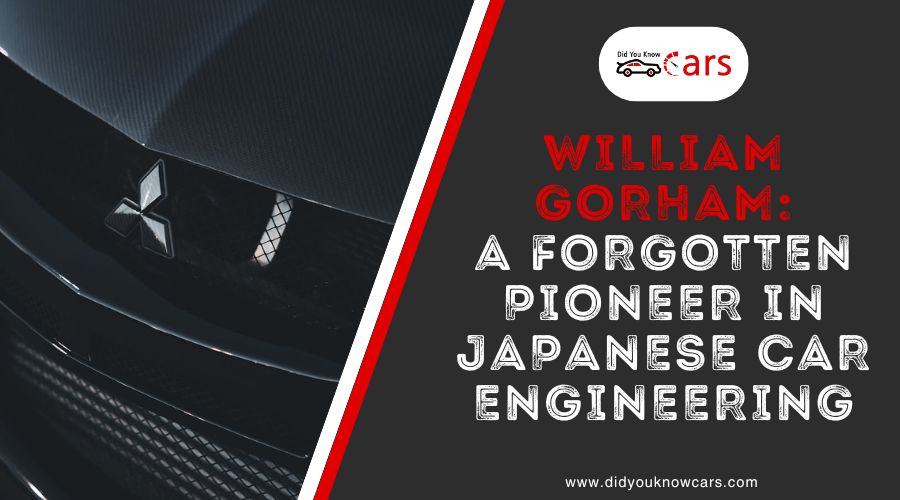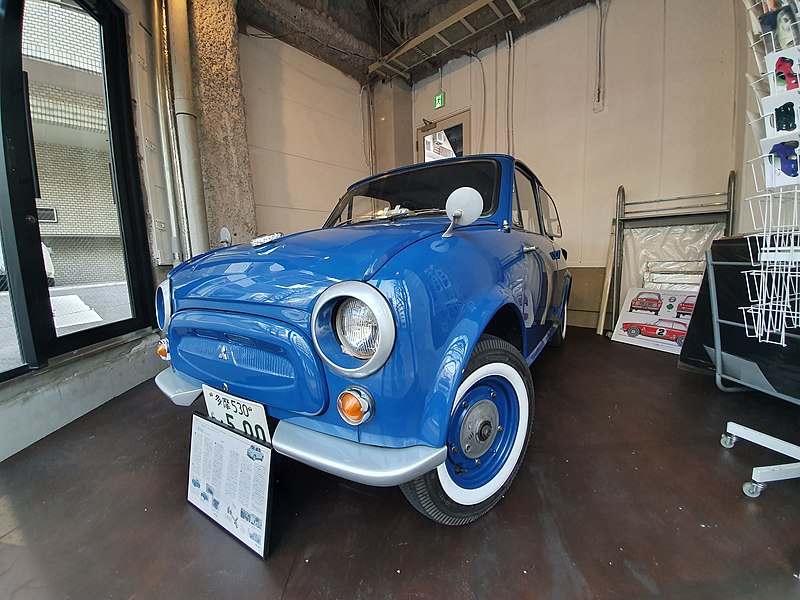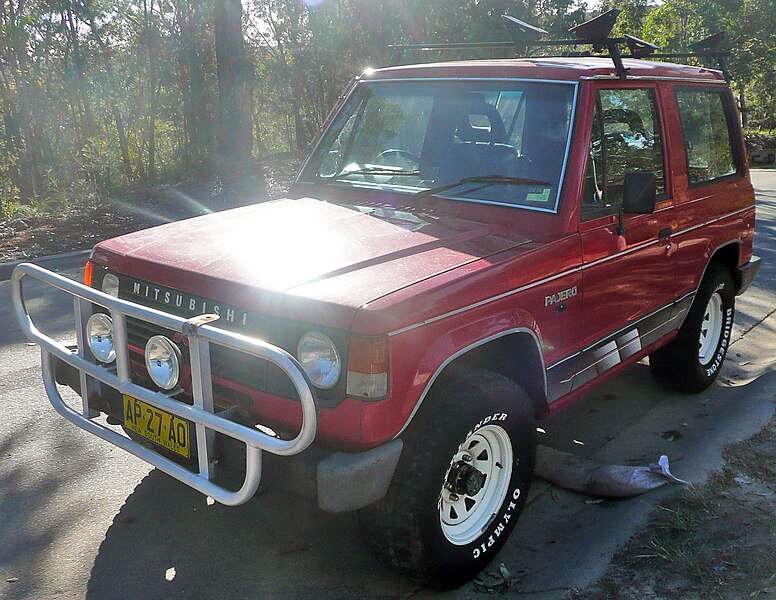Mitsubishi Motors is a Japanese multinational automotive manufacturing corporation based in Tokyo, Japan. It also operates a financial service that provides lending and financing for its car sales. As of 2011, it was the sixth biggest Japanese automaker, and the sixteenth biggest automaker in the world by production. But have you ever wondered how it began? Let’s take a look at Mitsubishi’s rich history and learn how it became a successful company.
How Mitsubishi Started
Mitsubishi, founded by Iwasaki Yatarō in 1870 as a shipping company, was initially named “Tsukumo Shokai.” In 1873, it became Mitsubishi Shokai. The name “Mitsubishi” combines “mitsu” (meaning “three”) and “hishi” (meaning “rhombus” or “diamond”), inspired by the three oak leaves from the crest of the Yamauchi or Tosa family, Iwasaki’s former employers. This is reflected in the company’s famous three-diamond emblem.
Starting just two years after the Meiji Restoration, Mitsubishi’s primary focus was shipping. The company smartly branched out into related industries. They moved into coal mining to get coal for their ships, acquired a shipyard to repair their vessels, and started an iron mill to supply materials for shipbuilding. They even began a marine insurance business to support their shipping operations. This expansion continued over time, using their experience in shipbuilding to venture into producing aircraft and other equipment. Their overseas shipping experience also led them to start a trading business.
In 1881, Mitsubishi expanded into coal mining with the acquisition of the Takashima Mine and later Hashima Island in 1890, using the coal for their steamships. Their growth continued into shipbuilding, banking, insurance, warehousing, and trading. Over time, Mitsubishi diversified into industries like paper, steel, glass, electrical equipment, aircraft, oil, and real estate. This diversification played a key role in modernizing Japanese industry, turning Mitsubishi into a major industrial conglomerate.
Mitsubishi diversified into different industries, and this led to the creation of several key companies:
- Mitsubishi Bank: Established in 1919, this bank became a big player in Japan’s banking sector. It merged with the Bank of Tokyo in 1996 and UFJ Holdings in 2004, forming what is now Japan’s largest bank and part of the Mitsubishi UFJ Financial Group.
- Mitsubishi Corporation: This company came into existence in 1950 and is now Japan’s largest general trading company.
- Mitsubishi Heavy Industries: This group includes a variety of industrial companies, such as:
- Mitsubishi Motors: The sixth-largest car manufacturer in Japan.
- Mitsubishi Atomic Industry: A company focused on nuclear power.
- Mitsubishi Chemical: The biggest chemicals company based in Japan.
- Mitsubishi Power: Specializing in energy systems.
- Nikon Corporation: Known for its expertise in optics and imaging.
When Did Mitsubishi Started Making Cars?
While Mitsubishi was founded by Iwasaki Yataro as a shipping firm, it was not until 1917 when they started making cars. Back then, the company was named Mitsubishi Shipbuilding Co. Ltd., and they produced the Mitsubishi Model A.. It was Japan’s first series-production automobile. It was a hand-built, seven-seater sedan which was based on the Fiat Tipo 3. But it was considered too expensive compared to its European and North American counterparts, therefore, in 1921, it was discontinued. Only 22 of these models were built.
Mitsubishi Shipbuilding and Mitsubishi Aircraft Co. merged in 1934 to create Mitsubishi Heavy Industries (MHI). Even though it concentrated mainly on aircraft, ships, and machinery manufacturing, they were able to develop the PX33 which was a prototype sedan for military use. It was the first Japanese-built passenger car that had a full-time four-wheel drive.
After World War Two
Mitsubishi manufactured military aircraft and the Mitsubishi A6M was a primary Japanese naval fighter during the Second World War. After the war, they went back to making vehicles. They developed a three-wheeled cargo vehicle called the Mizushima and a scooter called the Silver Pigeon.
In 1950, family-controlled conglomerates, including Mitsubishi, were ordered by the Allied powers to be broken up. With this, MHI was divided into three regional companies which are the East, West, and Central Japan Heavy-Industries, and each of these regional companies established automobile manufacturing.
East Japan Heavy-Industries imported an inexpensive American sedan in the knockdown kit. They sold it for the duration of the production run. Central Japan Heavy-Industries on the other hand, has a similar contract with Willys for knockdown kit-assembled Jeep.
West Japan Heavy-Industries and East Japan Industries had also expanded their automotive departments. In 1964, these three regional companies were once again re-integrated as Mitsubishi Heavy Industries.
Mitsubishi 500
In 1953, the Mitsubishi 500 became a mass-market sedan. It was designed to meet new demand from customers. During this time, the economy of Japan was on the rise. Their wages were increasing and the idea of having a family vehicle became popular.
In 1962, the Minica kei car was created. It was the oldest Mitsubishi car to be in production until it was replaced in 2011. In 1964, they launched the Mitsubishi Debonair. It was a luxury car that was primarily for the Japanese market. It was their flagship passenger vehicle on the domestic market.
Mitsubishi Colt Line
In 1962, Mitsubishi launched the Colt line of vehicles and its production continued until 2012. It was the first series of kei (very small) and subcompact cars during the 1960s. Part of this line was the Mitsubishi Colt 600 which was set to complement their Mitsubishi 500.
In 1963, the Colt 1000, which was a larger compact car, was introduced together with the Colt 800. These were followed by the Colt 1500 in 1965. In 1966, the Colt 1100 was launched and the Colt 1200 in 1968.
In 1978, Mitsubishi reestablished the Colt nameplate as a front-wheel-drive hatchback. It was then followed by a sedan in 1982. It was marketed in Japan as the Mirage as the Colt name was only used in Australia and Europe. From 1978 to 2002, there were multiple Mirage-based Colts that were sold.
Mitsubishi and Chrysler
Mitsubishi Heavy Industries decided to increase its exports by forging alliances with well-established foreign companies. So, in 1971, MHI sold a 15 percent share in the new company to the giant U.S. automotive Chrysler. With this deal, Chrysler started to sell the Galant which was sold as the Dodge Colt in the U.S. and as the Chrysler Sigma in Australia.
A net of Colt distribution deals had been recognized in 1977 across Europe and Mitsubishi pursued to start selling vehicles directly. However, cracks began showing between Chrysler and Mitsubishi’s relationship. Chrysler saw the overseas market being invaded by Mitsubishi and Mitsubishi on the other hand, felt that Chrysler was demanding too much in their corporate decisions.
In 1980, Chrysler battled to avoid bankruptcy and it had to sell its Australian division to Mitsubishi. After that, they renamed it Mitsubishi Motors Australia Ltd.
Mitsubishi was introduced directly to the American Market as a brand with the Tredia sedan and the Cordia and Starion Coupes. However, they had a restricted quota which was an agreement between the Japanese and US Governments. But by the end of the 1980s, Mitsubishi aired their first television advertising campaign because they were keen to increase their presence in the US.
Diamond Star Motors
Even though there was a tension between Chrysler and Mitsubishi, they still agreed to work together for a manufacturing operation in Illinois. This provided a way to get around the intended import limitations but also providing a new line of compact and subcompact cars.
This union resulted in the incorporation of Diamond Star Motors in 1985. The name was derived from the logos of the two companies, which were Mitsubishi’s three diamonds and Chrysler’s pentastar. The company was selling 67,000 cars in a year from 1987 in the United States. Three compact Coupes were launched under the names Mitsubishi Eclipse, Eagle Talon, and Plymouth Laser.
In 1991, Chrysler sold their share in Diamond Star Motors to Mitsubishi. They only shared components and manufacturing on a contractual basis. In 1993, they decreased their interest in Mitsubishi Motors to less than 3%. They also announced their plans to divest all remaining shares in the same year.
Mitsubishi and Honda
Through the 1990s, the Mitsubishi Pajero became hugely popular in Japan and was seeing huge success with the Diamante as well. In the years 1992 and 1993, it was rumored that Mitsubishi was planning a hostile takeover of Honda. It was because Honda had been caught off guard with the rise of the SUV market and had lost focus after the illness and death of their founder. However, they did not let a hostile takeover happen and instead took drastic steps to ensure that this did not happen.
Mitsubishi’s domestic share rise to 11.6% during the 1990s. This was down to the increase in the SUV market in Japan, however, many Japanese car manufacturers dismissed and did not think that it would take off in their own country.
Mitsubishi and Volvo
In 1991, Mitsubishi and Volvo undertook a joint partnership. Their project was branded NedCar. The Mitsubishi Carisma was produced alongside the Volvo S40/V40. Then, the production of the Mitsubishi Outlander for the European market was produced in the Netherlands.
In 1999, Volvo sold their Volvo Cars division to Ford, then they bought a 5% stake in Mitsubishi Motors in the same year. In 2001, they sold their stake to DaimlerChrysler.
Mitsubishi and Groupe PSA
Since 1999, Mitsubishi and Groupe PSA have been allied. They agreed to co-operate on the development of diesel engines using Mitsubishi’s gasoline direct injection technology. They also developed the Citroen C-Crosser SUV and the Peugeot 4007 based on Mitsubishi’s Outlander.
Mitsubishi’s Vehicle Defect Cover Up
In 2000, there were four defects that were publicized but in 2004, they confessed to 26 more defects going back as far as 1977. Some of the defects included failing brakes, malfunctioning clutches, and as well as fuel leaks.
They recalled about 163,000 cars as well as their Fuso trucks and buses, having a total of almost a million recalled vehicles. Kawasoe, Mitsubishi’s president was arrested and 23 of their employees were involved, while three of them were innocent.
The Fuel Mileage Scandal
Nissan, which is a partner of Mitsubishi, found inconsistencies between statistics provided by Mitsubishi and actual fuel consumption in 2016 while working on new microcars for both companies. Mitsubishi then admitted using incorrect methods and giving the wrong information on fuel consumption since 2002.
But the management of Mitsubishi said that they did not know about the issue and that the wrong information was from the microcar department. There was an investigation done by an independent company. In 2016, the resulting scandal led to Nissan acquiring a controlling interest in MMC.
In exchange for a 34% ownership stake in Mitsubishi Motors, Nissan agreed to invest $237.4 billion yen. In May 2016, Tetsuro Aikawa resigned as the president of the company. Aikawa and Mitsubishi Motors both denied any involvement from top management in the mileage scandal.
Mitsubishi in the Present Day
Despite the scandals that Mitsubishi had been through, it still remains as a strong company. Their pickups and SUVs’ popularity has been rising especially in the UK. The year 2017 marked the 100 years of the brand and by 2020, they are planning to launch 11 models. Up until today, Mitsubishi is still making great vehicles that appeal to families and as well as to businesses.



